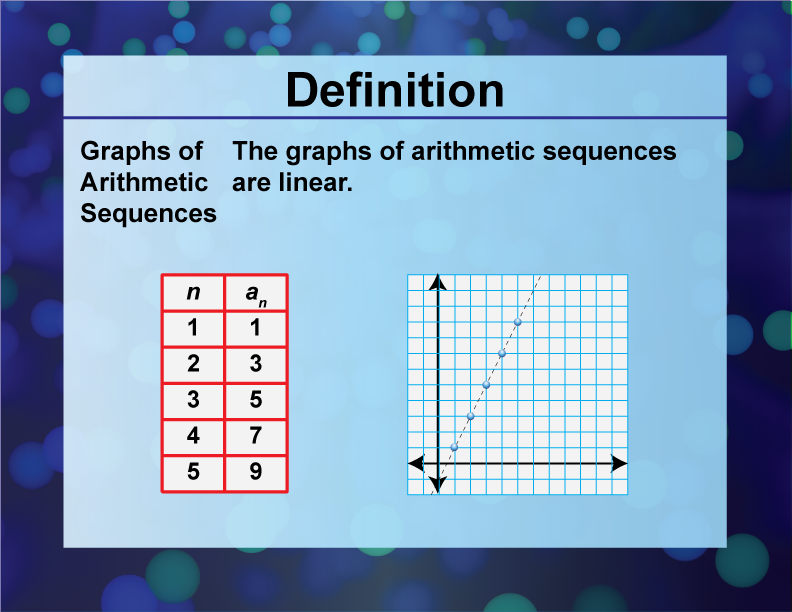
Display Title
Definition--Sequences and Series Concepts--Graphs of Arithmetic Sequences
Display Title
Graphs of Arithmetic Sequences

Topic
Sequences and Series
Definition
Graphs of arithmetic sequences form a linear graph on a coordinate plane.
Description
Graphs of arithmetic sequences are a visual tool used in mathematics to represent the terms of an arithmetic sequence on a coordinate plane. This concept is crucial for understanding linear patterns and relationships in sequences and series.
In real-world applications, graphing arithmetic sequences can help in visualizing trends and patterns in data, such as financial growth or decline over time. It is also used in educational settings to teach students about linear relationships and graphing techniques. Algebraically, if an is the nth term of an arithmetic sequence and d is the common difference, then
an = a1 + (n − 1)d
and the graph will be a straight line.
Understanding graphs of arithmetic sequences is essential for math education as it helps students develop skills in recognizing and analyzing linear patterns. It provides a foundation for more complex topics in algebra and calculus, and aids in developing problem-solving skills.
For a complete collection of terms related to sequences and series click on this link: Sequences and Series Collection
| Common Core Standards | CCSS.MATH.CONTENT.6.SP.B.4, CCSS.MATH.CONTENT.HSF.IF.A.3, CCSS.MATH.CONTENT.HSF.BF.A.2, CCSS.Math.CONTENT.HSF.LE.A.2 |
|---|---|
| Grade Range | 6 - 9 |
| Curriculum Nodes |
Algebra • Sequences and Series • Sequences |
| Copyright Year | 2021 |
| Keywords | data analysis, arithmetic sequence, common difference, definitions, glossary terms, geometric sequence, common ratio |